How Collective Efficacy Mediates the Association between Principal Instructional Leadership and Teacher Self-Efficacy: Findings from a Meta-Analytic Structural Equation Modeling (MASEM) Study
Abstract
1. Introduction
2. Conceptual Background
2.1. Instructional Leadership
2.2. Teacher Self-Efficacy
2.3. Collective Efficacy
2.4. The Proposed Model of the Study
3. Materials and Methods
3.1. Research Design and Data Collection
- Inclusion Criteria: (1) studies involving eligible statistical data for meta-analysis, and (2) studies measuring the relationship between PIL-TSEF or PIL-CEF; Exclusion Criteria: (1) studies with missing correlational values; (2) conceptual/review papers; and (3) studies in a language other than English or Turkish.
3.2. Coding Procedure
3.3. Data Analysis
4. Results
4.1. Overall Effect Size between PIL and TSEF
4.2. Overall Effect Size between PIL and CEF
4.3. Overall Effect Size between CEF and TSEF
4.4. The Mediating Effect of CEF in the Association between PIL and TSEF
5. Discussion
Limitations and Implications for Future Research
6. Conclusions
Author Contributions
Funding
Institutional Review Board Statement
Informed Consent Statement
Data Availability Statement
Conflicts of Interest
References
- Flores, M.A. Preparing teachers to teach in complex settings: Opportunities for professional learning and development. Eur. J. Teach. Educ. 2020, 43, 297–300. [Google Scholar] [CrossRef]
- Karakose, T.; Polat, H.; Yirci, R.; Tülübaş, T.; Papadakis, S.; Ozdemir, T.Y.; Demirkol, M. Assessment of the relationships between prospective mathematics teachers’ classroom management anxiety, academic self-efficacy beliefs, academic motivation and attitudes toward the teaching profession using structural equation modeling. Mathematics 2023, 11, 449. [Google Scholar] [CrossRef]
- Karakose, T.; Tülübaş, T. How can ChatGPT facilitate teaching and learning: Implications for contemporary education. Educ. Process Int. J. 2023, 12, 7–16. [Google Scholar] [CrossRef]
- Al-Mahdy, Y.F.H.; Emam, M.M.; Hallinger, P. Assessing the contribution of principal instructional leadership and collective teacher efficacy to teacher commitment in Oman. Teach. Teach. Educ. 2018, 69, 191–201. [Google Scholar] [CrossRef]
- Huber, S.; Tulowitzki, P.; Hameyer, U. School leadership and curriculum: German perspectives. Leadersh. Policy Sch. 2017, 16, 272–302. [Google Scholar]
- Kılınç, A.; Ceylan, H.; Demir, M.; Emre, I. Investigation of the effects of school principals’ instructional leadership behaviors on teachers’ self-efficacy according to teachers’ views. Int. J. Schol. Educ. 2022, 6, 130–149. [Google Scholar]
- Leithwood, K.; Louis, K.S.; Anderson, S.; Wahlstrom, K. How Leadership Influences Student Learning; Wallace Foundation: New York, NY, USA, 2004. [Google Scholar]
- Bolman, L.G.; Deal, T.E. Reframing Organizations: Artistry, Choice, and Leadership, 6th ed.; Jossey-Bass: San Francisco, CA, USA, 2017. [Google Scholar]
- Leithwood, K.; Sun, J.; Schumacker, R. How school leadership influences student learning: A test of “The four paths model”. Educ. Admin. Q. 2020, 56, 570–599. [Google Scholar] [CrossRef]
- Liu, Y.; Li, L.; Huang, C. To what extent is shared instructional leadership related to teacher self-efficacy and student academic performance in China? Sch. Eff. Sch. Improv. 2022, 33, 381–402. [Google Scholar] [CrossRef]
- Robinson, V.M.; Lloyd, C.A.; Rowe, K.J. The impact of leadership on student outcomes: An analysis of the differential effects of leadership types. Educ. Admin. Q. 2008, 44, 635–674. [Google Scholar] [CrossRef]
- Austin, G.R. Exemplary schools and the search for effectiveness. Educ. Leadersh. 1979, 37, 10–14. Available online: https://eric.ed.gov/?id=EJ208050 (accessed on 12 August 2023).
- Edmonds, R. Effective schools for the urban poor. Educ. Leadersh. 1979, 37, 15–24. [Google Scholar]
- Hallinger, P.; Heck, R.H. Exploring the principal’s contribution to school effectiveness: 1980–1995. Sch. Eff. Sch. Improv. 1998, 9, 157–191. [Google Scholar] [CrossRef]
- Hallinger, P. A review of three decades of doctoral studies using the principal instructional management rating scale: A lens on methodological progress in educational leadership. Educ. Admin. Q. 2011, 47, 271–306. [Google Scholar] [CrossRef]
- Marks, H.M.; Printy, S.M. Principal leadership and school performance: An integration of transformational and instructional leadership. Educ. Admin. Q. 2003, 39, 370–397. [Google Scholar] [CrossRef]
- Alanoglu, M. The role of instructional leadership in increasing teacher self-efficacy: A meta-analytic review. Asia Pac. Educ. Rev. 2022, 23, 233–244. [Google Scholar] [CrossRef]
- Liu, Y.; Bellibaş, M.Ş.; Gümüş, S. The effect of instructional leadership and distributed leadership on teacher self-efficacy and job satisfaction: Mediating roles of supportive school culture and teacher collaboration. Educ. Manag. Admin. Leadersh. 2020, 49, 430–453. [Google Scholar] [CrossRef]
- May, H.; Supovitz, J.A. The scope of principal efforts to improve instruction. Educ. Admin. Q. 2011, 4, 332–352. [Google Scholar] [CrossRef]
- Liu, S.; Hallinger, P. Principal instructional leadership, teacher self-efficacy, and teacher professional learning in China: Testing a mediated-effects model. Educ. Admin. Q. 2018, 54, 501–528. [Google Scholar] [CrossRef]
- Cansoy, R.; Parlar, H.; Polatcan, M. Collective teacher efficacy as a mediator in the relationship between instructional leadership and teacher commitment. Int. J. Leadersh. Educ. 2020, 25, 900–918. [Google Scholar] [CrossRef]
- Calik, T.; Sezgin, F.; Kavgaci, H.; Kilinc, A.C. Examination of relationships between instructional leadership of school principals and self-efficacy of teachers and collective teacher efficacy. Educ. Sci. Theory Pract. 2012, 12, 2498–2504. Available online: https://eric.ed.gov/?id=EJ1002859 (accessed on 12 August 2023).
- Ross, J.A.; Gray, P. School leadership and student achievement: The mediating effects of teacher beliefs. Canad. J. Educ. 2006, 29, 798–822. [Google Scholar] [CrossRef]
- Bandura, A. Self-efficacy mechanism in human agency. Am. Psychol. 1982, 37, 122–147. [Google Scholar] [CrossRef]
- Bandura, A. Regulation of cognitive processes through perceived self-efficacy. Dev. Psychol. 1989, 25, 729–735. [Google Scholar] [CrossRef]
- Bandura, A. Self-Efficacy: The Exercise of Control; Freeman: New York, NY, USA, 1997. [Google Scholar]
- Goddard, R.D.; Hoy, W.K.; Hoy, A.W. Collective efficacy beliefs: Theoretical developments, empirical evidence, and future directions. Educ. Res. 2004, 33, 3–13. [Google Scholar] [CrossRef]
- Goddard, R.; Goddard, Y.; Sook Kim, E.; Miller, R. A theoretical and empirical analysis of the roles of instructional leadership, teacher collaboration, and collective efficacy beliefs in support of student learning. Am. J. Educ. 2015, 121, 501–530. [Google Scholar] [CrossRef]
- Cansoy, R.; Parlar, H. Examining the relationship between school principals’ instructional leadership behaviors, teacher self-efficacy, and collective teacher efficacy. Int. J. Educ. Manag. 2018, 32, 550–567. [Google Scholar] [CrossRef]
- Duyar, I.; Gumus, S.; Sukru Bellibas, M. Multilevel analysis of teacher work attitudes: The influence of principal leadership and teacher collaboration. Int. J. Educ. Manag. 2013, 27, 700–719. [Google Scholar] [CrossRef]
- Bellibaş, M.Ş.; Gümüş, S.; Liu, Y. Does school leadership matter for teachers’ classroom practice? The influence of instructional leadership and distributed leadership on instructional quality. Sch. Eff. Sch. Improv. 2021, 32, 387–412. [Google Scholar] [CrossRef]
- Gümüş, S.; Hallinger, P.; Cansoy, R.; Bellibaş, M.Ş. Instructional leadership in a centralized and competitive educational system: A qualitative meta-synthesis of research from Turkey. J. Educ. Admin. 2021, 59, 702–720. [Google Scholar] [CrossRef]
- Karacabey, M.F.; Bellibaş, M.Ş.; Adams, D. Principal leadership and teacher professional learning in Turkish schools: Examining the mediating effects of collective teacher efficacy and teacher trust. Educ. Stud. 2020, 48, 253–272. [Google Scholar] [CrossRef]
- Hallinger, P. A data-driven approach to assess and develop instructional leadership with the PIMRS. In Tools for Improving Principals’ Work; Shen, J., Ed.; Peter Lang Publishing: New York, NY, USA, 2012; pp. 47–69. [Google Scholar]
- Hallinger, P.; Gümüş, S.; Bellibaş, M.Ş. ‘Are principals instructional leaders yet?’ A science map of the knowledge base on instructional leadership, 1940-2018. Scientometrics 2020, 122, 1629–1650. [Google Scholar] [CrossRef]
- Leithwood, K.; Jantzi, D. The relative effects of principal and teacher sources of leadership on student engagement with school. Educ. Admin. Q. 1999, 35, 679–706. [Google Scholar] [CrossRef]
- Hallinger, P.; Murphy, J. Assessing the instructional management behavior of principals. Elem. Sch. J. 1985, 86, 217–247. [Google Scholar] [CrossRef]
- Hallinger, P.; Wang, W.C. Assessing Leadership for Learning with the Principal Instructional Management Rating Scale; Springer: Dordrecht, The Netherlands, 2015. [Google Scholar]
- Zhan, X.; Anthony, A.B.; Goddard, R.; Beard, K.S. Development, factor structure, and reliability of the Shared Instructional Leadership Scale in public secondary schools. Educ. Manag. Admin. Leadersh. 2023, 51, 75–94. [Google Scholar] [CrossRef]
- Bandura, A. Exercise of personal and collective efficacy in changing societies. In Self-Efficacy in Changing Societies; Bandura, A., Ed.; Cambridge University Press: New York, NY, USA, 1995; pp. 1–45. [Google Scholar]
- Skaalvik, E.M.; Skaalvik, S. Dimensions of teacher self-efficacy and relations with strain factors, perceived collective teacher efficacy, and teacher burnout. J. Educ. Psychol. 2007, 99, 611–627. [Google Scholar] [CrossRef]
- Schunk, D.H.; Meece, J.L. Self-efficacy development in adolescence. In Self-efficacy Beliefs of Adolescents; Pajares, F., Urdan, T., Eds.; Information Age: Greenwich, CT, USA, 2006; pp. 71–96. [Google Scholar]
- Tschannen-Moran, M.; Woolfolk Hoy, A.; Hoy, W.K. Teacher efficacy: Its meaning and measure. Rev. Educ. Res. 1998, 68, 202–248. [Google Scholar] [CrossRef]
- Daing, C.A.; Mustapha, L.C. School administrators’ instructional leadership skills and teachers’ performance and efficacy in senior high schools in the national capital region, Philippines. Int. J. Educ. Policy Res. Rev. 2023, 11, 1–18. [Google Scholar] [CrossRef]
- Kaya, M.; Koçyigit, M. The relationship between transformational leadership and teacher self-efficacy in terms of national culture. Educ. Process Int. J. 2023, 12, 36–52. [Google Scholar] [CrossRef]
- Skaalvik, E.M.; Skaalvik, S. Teacher self-efficacy and collective teacher efficacy: Relations with perceived job resources and job demands, feeling of belonging, and teacher engagement. Creat. Educ. 2019, 10, 1400–1424. [Google Scholar] [CrossRef]
- Tschannen-Moran, M.; Woolfolk Hoy, A. Teacher efficacy: Capturing an elusive construct. Teach. Teach. Educ. 2001, 17, 783–805. [Google Scholar] [CrossRef]
- Tschannen-Moran, M.; Barr, M. Fostering student learning: The relationship of collective teacher efficacy and student achievement. Leadersh. Policy Sch. 2004, 3, 189–209. [Google Scholar] [CrossRef]
- Goddard, R. Collective efficacy: A neglected construct in the study of schools and student achievement. J. Educ. Psychol. 2001, 93, 467–476. [Google Scholar] [CrossRef]
- Qadach, M.; Schechter, C.; Da’as, R. Instructional leadership and teachers’ intent to leave: The mediating role of collective teacher efficacy and shared vision. Educ. Manag. Admin. Leadersh. 2020, 48, 617–634. [Google Scholar] [CrossRef]
- Leithwood, K.; Patten, S.; Jantzi, D. Testing a conception of how school leadership influences student learning. Educ. Admin. Q. 2010, 46, 671–706. [Google Scholar] [CrossRef]
- Rew, W. Instructional Leadership Practices and Teacher Efficacy Beliefs: Cross-National Evidence from TALIS. Ph.D. Dissertation, Florida State University, Tallahassee, FL, USA, 2013. [Google Scholar]
- Bellibaş, M.S.; Liu, Y. Multilevel analysis of the relationship between principals’ perceived practices of instructional leadership and teachers’ self-efficacy perceptions. J. Educ. Admin. 2017, 55, 49–69. [Google Scholar] [CrossRef]
- Gallante, P.E. Principal Leadership Behaviors and Teacher Efficacy. Ph.D. Dissertation, Walden University, Minneapolis, MN, USA, 2015. [Google Scholar]
- Smuati, S.; Niemted, W. The impact of instructional leadership on Indonesian elementary teacher efficacy. Ilkogr. Online 2020, 19, 2335–2346. [Google Scholar] [CrossRef]
- Rodrigues, M.; Dinis, F.M.; Santos, H.; Ferreira, P.D. From real to digital life: The relationship between students’ perceptions of school climate openness, self-efficacy, and prosocial gaming behaviors. Educ. Process Int. J. 2023, 12, 17–35. [Google Scholar] [CrossRef]
- Voelkel, R.H.; Chrispeels, J.H. Understanding the link between professional learning communities and teacher collective efficacy. Sch. Eff. Sch. Improv. 2017, 28, 505–526. [Google Scholar] [CrossRef]
- Kurt, T.; Duyar, I.; Çalik, T. Are we legitimate yet? A closer look at the casual relationship mechanisms among principal leadership, teacher self-efficacy, and collective efficacy. J. Manag. Dev. 2012, 31, 71–86. [Google Scholar] [CrossRef]
- Malinen, O.-P.; Savolainen, H. The effect of perceived school climate and teacher efficacy in behavior management on job satisfaction and burnout: A longitudinal study. Teach. Teach. Educ. 2016, 60, 144–152. [Google Scholar] [CrossRef]
- Stephanou, G.; Oikonomou, A. Teacher emotions in primary and secondary education: Effects of self-efficacy and collective-efficacy, and problem-solving appraisal as a moderating mechanism. Psychology 2018, 9, 820–875. [Google Scholar] [CrossRef]
- Avanzi, L.; Schuh, S.C.; Fraccaroli, F.; van Dick, R. Why does organizational identification relate to reduced employee burnout? the mediating influence of social support and collective efficacy. Work Stress 2015, 29, 1–10. [Google Scholar] [CrossRef]
- Skaalvik, E.M.; Skaalvik, S. Motivated for teaching? associations with school goal structure, teacher self-efficacy, job satisfaction and emotional exhaustion. Teach. Teach. Educ. 2017, 67, 152–160. [Google Scholar] [CrossRef]
- Blatti, T.; Clinton, J.; Graham, L. Exploring collective teacher efficacy in an international school in Shanghai. Int. J. Learn. Teach. Educ. Res. 2019, 18, 214–235. [Google Scholar] [CrossRef]
- Cheung, M.W.-L.; Chan, W. Meta-analytic structural equation modeling: A two-stage approach. Psychol. Methods 2005, 10, 40–64. [Google Scholar] [CrossRef] [PubMed]
- Cheung, M.W.-L.; Hong, R.Y. Applications of meta-analytic structural equation modeling in health psychology: Examples, issues, and recommendations. Health Psychol. Rev. 2017, 11, 265–279. [Google Scholar] [CrossRef] [PubMed]
- Jeyaraj, A.; Dwivedi, Y.K. Meta-analysis in information systems research: Review and recommendations. Int. J. Inform. Manag. 2020, 55, 102226. [Google Scholar] [CrossRef]
- Moher, D.; Liberati, A.; Tetzlaff, J.; Altman, D.G.; Prisma Group. Preferred reporting items for systematic reviews and meta-analyses: The PRISMA statement. Int. J. Surg. 2010, 8, 336–341. [Google Scholar] [CrossRef] [PubMed]
- Cadungog, M.C. The mediating effect of professional development on the relationship between instructional leadership and teacher self-efficacy. Int. J. Nov. Res. Educ. Learn. 2015, 2, 90–101. Available online: https://www.noveltyjournals.com/upload/paper/The%20Mediating%20Effect%20of%20Professional-325.pdf (accessed on 18 August 2023).
- Lineburg, P.N. The Influence of the Instructional Leadership of Principals on Change in Teachers’ Instructional Practices. Ph.D. Dissertation, Virginia Tech, Blacksburg, VA, USA, 2010. [Google Scholar]
- Ata, E. Relationship between the Self-Efficacy Beliefs and Effective School Leadership of School Administration. Ph.D. Dissertation, Gazi University, Ankara, Türkiye, 2015. [Google Scholar]
- Dilekçi, Ü.; Limon, I. The relationship between principals’ instructional leadership and teachers’ positive instructional emotions: Self-efficacy as a mediator. J. Educ. Leadersh. Policy Stud. 2022, 6, 1–20. Available online: https://files.eric.ed.gov/fulltext/EJ1352897.pdf (accessed on 14 July 2023).
- Isa, N.I.M.M.; Mansor, A.N.; Wahab, J.L.A.; Alias, B.S. Principals’ instructional leadership towards teachers’ self-efficacy. Int. J. Engin.Technol. 2018, 7, 449–452. Available online: https://www.sciencepubco.com/index.php/IJET (accessed on 18 August 2023).
- Rihm, G.R.F. Assesing the Instructional Leadership’s and Academic Heterogeneity’s Influence over Teachers’ Efficacy Beliefs. Ph.D. Dissertation, Pontificia Universidad Catolica de Chile, Santiago, Chile, 2016. [Google Scholar]
- Jeffri, A.I.; Hamid, A.H.A. The relationship between 21st-century instructional leadership and teachers’ self-efficacy. Sciences 2022, 12, 258–271. [Google Scholar] [CrossRef] [PubMed]
- Khun-inkeeree, H.; Ahmad, A.A.; MohdSofian, F.N.R. The relationship between principals’ instructional leadership and teachers’ self efficacy in religious private school in Alor Setar District. Rangsit J. Educ. Stud. 2018, 5, 52–63. [Google Scholar] [CrossRef]
- Alig-Mielcarek, J.M. A Model of School Success: Instructional Leadership, Academic Press, and Student Achievement. Ph.D. Dissertation, University of Ohio State, Columbus, OH, USA, 2013. [Google Scholar]
- Kunwor, M. Effects of principal’s instructional leadership on their teacher efficacy in private secondary school. Int. J. Innov. Sci. Res. Technol. 2023, 8, 519–525. Available online: https://www.ijisrt.com/assets/upload/files/IJISRT23FEB300.pdf (accessed on 18 August 2023).
- Hallinger, P.; Hosseingholizadeh, R.; Hashemi, N.; Kouhsari, M. Do beliefs make a difference? Exploring how principal self-efficacy and instructional leadership impact teacher efficacy and commitment in Iran. Educ. Manag. Admin. Leadersh. 2017, 46, 800–819. [Google Scholar] [CrossRef]
- Özdemir, G.; Sahin, S.; Öztürk, N. Teachers’ self-efficacy perceptions in terms of school principal’s instructional leadership behaviours. Int. J. Progress. Educ. 2020, 16, 25–40. [Google Scholar] [CrossRef]
- Siriparp, T.; Buasuwan, P.; Nanthachai, S. The effects of principal instructional leadership, collective teacher efficacy and teacher role on teacher self-efficacy: A moderated mediation examination. Kasetsart J. Soci. Sci. 2022, 43, 353–360. [Google Scholar] [CrossRef]
- Bulduklu, E. Okul Müdürlerinin Öğretimsel Liderliği, Öğretmen Öz-Yeterliği ve Öğrenci Başarısı Arasındaki Ilişkinin Incelenmesi. Master’s Thesis, Mevlana University, Konya, Türkiye, 2010. [Google Scholar]
- Flimban, R.A. A study of the IMPACT of Instructional Leadership on Elementary Teacher Efficacy. Ph.D. Dissertation, Mississippi College, Clinton, MS, USA, 2019. [Google Scholar]
- Vari, T.J. Collective Efficacy and Instructional Leadership: A Cross-Sectional Study of Teachers’ Perceptions. Ph.D. Dissertation, Wilmington University, New Castle, DE, USA, 2011. [Google Scholar]
- Ma, X.; Marion, R. Exploring how instructional leadership affects teacher efficacy: A multilevel analysis. Educ. Manag. Admin. Leadersh. 2021, 49, 188–207. [Google Scholar] [CrossRef]
- Hosseingholizadeh, R.; Amrahi, A.; El-Farr, H. Instructional leadership, and teacher’s collective efficacy, commitment, and professional learning in primary schools: A mediation model. Prof. Dev. Educ. 2023, 49, 518–535. [Google Scholar] [CrossRef]
- Yusof, M.H.M.; Alias, M.K. The relationship between instructional leadership and self-efficacy in environmental education among Malaysian secondary school teachers. Int. Acad. Res. J. Soc. Sci. 2015, 1, 41–50. Available online: https://www.iarjournal.com/wp-content/uploads/2015/01/IARJ-SS-20151-41-50.pdf (accessed on 12 July 2023 ).
- Zheng, X.; Yin, H.; Li, Z. Exploring the relationships among instructional leadership, professional learning communities and teacher self-efficacy in China. Educ. Manag. Admin. Leadersh. 2019, 47, 843–859. [Google Scholar] [CrossRef]
- Louis, K.S.; Leithwood, K.; Wahlstrom, K.L.; Anderson, S.E.; Michlin, M.; Mascall, B. Learning from Leadership: Investigating the Links to Improved Student Learning; Center for Applied Research and Educational Improvement/University of Minnesota and Ontario Institute for Studies in Education/University of Toronto: Toronto, ON, Canada, 2010; Volume 42, pp. 50–110. [Google Scholar]
- Thien, L.M.; Lim, S.Y.; Adams, D. The evolving dynamics between instructional leadership, collective teacher efficacy, and dimensions of teacher commitment: What can Chinese independent high schools tell us? Int. J. Leadersh. Educ. 2021, 1–23. [Google Scholar] [CrossRef]
- Cooper, H. Research Synthesis and Meta-Analysis; SAGE Publications: New York, NY, USA, 2010; Available online: https://us.sagepub.com/en-us/nam/research-synthesis-and-meta-analysis/book241775 (accessed on 12 July 2023).
- Borenstein, M.; Higgins, J.P.T.; Hedges, L.V.; Rothstein, H.R. Basics of meta-analysis: I2 is not an absolute measure of heterogeneity. Res. Synth. Methods 2017, 8, 5–18. [Google Scholar] [CrossRef]
- Lovakov, A.; Agadullina, E. Empirically derived guidelines for effect size interpretation in social psychology. Eur. J. Soc. Psychol. 2021, 51, 485–504. [Google Scholar] [CrossRef]
- Higgins, J.P.T.; Thompson, S.G.; Deeks, J.J.; Altman, D.G. Measuring inconsistency in meta-analyses. BMJ Bri. Med. J. 2003, 327, 557–560. [Google Scholar] [CrossRef]
- Egger, M.; Davey Smith, G.; Schneider, M.; Minder, C. Bias in meta-analysis detected by a simple, graphical test. BMJ Bri. Med. J. 1997, 315, 629–634. [Google Scholar] [CrossRef] [PubMed]
- Begg, C.B.; Mazumdar, M. Operating characteristics of a rank correlation test for publication bias. Biometrics 1994, 50, 1088–1101. [Google Scholar] [CrossRef]
- Duval, S.; Tweedie, R. Trim and fill: A simple funnel-plot-based method of testing and adjusting for publication bias in meta-analysis. Biometrics 2000, 56, 455–463. [Google Scholar] [CrossRef]
- Schwarzer, G. Package ‘meta’, (5.2-0); CRAN: Vienna, Austria, 2022; Available online: https://github.com/guido-s/meta/ (accessed on 26 August 2023).
- R Core Team. R: A Language and Environment for Statistical Computing, 4.1.2; R Foundation for Statistical Computing: Vienna, Austria, 2021; Available online: https://www.R-project.org/ (accessed on 28 August 2023).
- Cheung, M.W.-L. Meta-Analysis: A Structural Equation Modeling Approach; John Wiley & Sons: Hoboken, NJ, USA, 2015. [Google Scholar]
- Jak, S.; Cheung, M.W.-L. Meta-analytic structural equation modeling with moderating effects on SEM parameters. Psychol. Methods 2020, 25, 430–455. [Google Scholar] [CrossRef]
- Cheung, M.W.-L. MetaSEM: An R package for meta-analysis using structural equation modeling. Front. Psychol. 2015, 5, 1521. [Google Scholar] [CrossRef]
- Schutte, N.S.; Keng, S.-L.; Cheung, M.W.-L. Emotional intelligence mediates the connection between mindfulness and gratitude: A meta-analytic structural equation modeling study. Mindfulness 2021, 12, 2613–2623. [Google Scholar] [CrossRef]
- Hisham, N.F.A. The Impact of Form Six Senior Assistants’ Instructional Leadership on Teachers’ Self-Efficacy at Rural Secondary Schools in Segamat, Johor. Ph.D. Dissertation, Universiti Teknologi MARA, Johor, Malaysia, 2023. [Google Scholar]
- Mydin, A.A.; Alaklabi, S.; Alomar, A. A review of teachers’ self-efficacy and to what extent it is influenced by instructional leadership in educational institutions. Int. Transact. J. Eng. Manag. App. Sci. Technol. 2022, 13, 1–12. [Google Scholar] [CrossRef]
- Skaalvik, E.M.; Skaalvik, S. Teacher stress and teacher self-efficacy as predictors of engagement, emotional exhaustion, and motivation to leave the teaching profession. Creat. Educ. 2016, 7, 1785. [Google Scholar] [CrossRef]
- Rotter, J.B. Generalized expectancies for internal versus external control of reinforcement. Psychol. Monog. Gen. App. 1966, 80, 1–28. [Google Scholar] [CrossRef]
- Anderson, S.E. Positioning the principals in patterns of school leadership distribution. In Distributed Leadership According to The Evidence; Leithwood, K., Mascall, B., Strauss, T., Eds.; Routledge: Oxfordshire, UK, 2009; pp. 129–154. [Google Scholar]
- Herawati, R.; Tjahjono, H.K. The influence of instructional leadership on professional competence mediated by self-efficacy and social capital. J. Manaj. Bisnis 2020, 11, 202–213. [Google Scholar] [CrossRef]
- Fancera, S.F.; Bliss, J.R. Instructional leadership influence on collective teacher efficacy to improve school achievement. Leadersh. Policy Sch. 2011, 10, 349–370. [Google Scholar] [CrossRef]
- Goddard, R.D.; Skrla, L.; Salloum, S.J. The role of collective efficacy in closing student achievement gaps: A mixed methods study of school leadership for excellence and equity. J. Educ. Stud. Placed Risk JESPAR 2017, 224, 220–236. [Google Scholar] [CrossRef]
- Kim, T.; Lee, Y. Principal instructional leadership for teacher participation in professional development: Evidence from Japan, Singapore, and South Korea. Asia Pac. Educ. Rev. 2019, 21, 261–278. [Google Scholar] [CrossRef]
- Papadakis, S.; Gözüm, A.İ.C.; Kaya, Ü.Ü.; Kalogiannakis, M.; Karaköse, T. Examining the validity and reliability of the teacher self-efficacy scale in the use of ICT at home for preschool distance education (TSES-ICT-PDE) among Greek preschool teachers: A comparative study with Turkey. In IoT, AI, and ICT for Educational Applications: EAI/Springer Innovations in Communication and Computing; Papadakis, S., Ed.; Springer: Cham, Switzerland, 2024. [Google Scholar] [CrossRef]
- Skaalvik, E.M.; Skaalvik, S. Teacher self-efficacy and teacher burnout: A study of relations. Teach. Teach. Educ. 2010, 26, 1059–1069. [Google Scholar] [CrossRef]
- Tschannen-Moran, M.; McMaster, P. Sources of self-efficacy: Four professional development formats and their relationship to self-efficacy and implementation of a new teaching strategy. Elem. Sch. J. 2009, 110, 228–245. [Google Scholar] [CrossRef]
- Kurt, T. Okul Müdürlerinin Dönüşümcü ve Işlemci Liderlik Stilleri Ile Öğretmenlerin Kolektif Yeterliği ve öz Yeterliği Arasındaki Ilişkilerin Incelenmesi. Ph.D. Dissertation, Gazi University, Ankara, Türkiye, 2009. [Google Scholar]
- Tschannen-Moran, M.; Woolfolk Hoy, A. The differential antecedents of self-efficacy beliefs of novice and experienced teachers. Teach. Teach. Educ. 2007, 23, 944–956. [Google Scholar] [CrossRef]
- Bandura, A. Perceived self-efficacy in cognitive development and functioning. Educ. Psychol. 1993, 28, 117–148. Available online: https://educational-innovation.sydney.edu.au/news/pdfs/Bandura%201993.pdf (accessed on 14 July 2023). [CrossRef]
- Balena, V. Instructional Leadership Skills of Grade Level Chairpersons and Teaching Performance of Faculty Members in Selected Elementary School: Towards a Proposed Leadership Training Program. Master’s Thesis, Central Colleges of the Philippines, Quezon City, Philippines, 2015. [Google Scholar]
- Aldridge, J.M.; Fraser, B.J. Teachers’ views of their school climate and its relationship with teacher self-efficacy and job satisfaction. Learn. Environ. Res. 2016, 19, 291–307. [Google Scholar] [CrossRef]
- Viel-Ruma, K.; Houchins, D.; Jolivette, K.; Benson, G. Efficacy beliefs of special educators: The relationships among collective efficacy, teacher self-efficacy, and job satisfaction. Teach. Educ. Spec. Educ. 2010, 33, 225–233. [Google Scholar] [CrossRef]
- Eagly, A.H.; Karau, S.J.; Johnson, B.T. Gender and leadership style among school principals: A meta-analysis. Educ. Admin. Q. 1992, 28, 76–102. [Google Scholar] [CrossRef]
- Hallinger, P.; Dongyu, L.; Wang, W.C. Gender differences in instructional leadership: A meta-analytic review of studies using the principal instructional management rating scale. Educ. Admin. Q. 2016, 52, 567–601. [Google Scholar] [CrossRef]
- Brandon, D.P. Self-efficacy: Gender differences of prospective primary teachers in Botswana. Res. Educ. 2000, 64, 36–43. [Google Scholar] [CrossRef]
- Rezaeian, S.; Abdollahzadeh, E. Teacher efficacy and its correlates in the EFL context of Iran: The role of age, experience, and gender. Int. Online J. Educ. Teach. 2020, 7, 1533–1548. Available online: http://iojet.org/index.php/IOJET/article/view/788 (accessed on 18 August 2023).
- Vieluf, S.; Kunter, M.; Van de Vijver, F.J. Teacher self-efficacy in cross-national perspective. Teach. Teach. Educ. 2013, 35, 92–103. [Google Scholar] [CrossRef]
- Rani, S.; Jain, R. Understanding the relationship between gender and experience in the self-efficacy of Indian teacher educators. J. Posit. Sch. Psychol. 2023, 7, 953–964. Available online: https://mail.journalppw.com/index.php/jpsp/article/view/15318/9871 (accessed on 18 August 2023).
- Aziz, F.; Quraishi, U. Influence of gender, professional qualification and job experience on secondary school teachers’ self-efficacy. FWU J. Soc. Sci. 2017, 11, 233–244. Available online: https://openurl.ebsco.com/EPDB%3Agcd%3A7%3A3181703/detailv2?sid=ebsco%3Aplink%3Ascholar&id=ebsco%3Agcd%3A127635317&crl=c (accessed on 22 August 2023).
- Cheung, H.T. The measurement of teacher efficacy: Hong Kong primary in-service teachers. J. Educ. Teach. 2006, 32, 435–451. [Google Scholar] [CrossRef]
- George, S.V.; Richardson, P.W.; Watt, H.M. Early career teachers’ self-efficacy: A longitudinal study from Australia. Aust. J. Educ. 2018, 62, 217–233. [Google Scholar] [CrossRef]
- Klassen, R.M.; Chiu, M.M. Effects on teachers’ self-efficacy and job satisfaction: Teacher gender, years of experience, and job stress. J. Educ. Psychol. 2010, 102, 741–756. [Google Scholar] [CrossRef]
- Canada, K.; Pringle, R. The role of gender in college classroom interactions: A social context approach. Sociol. Educ. 1995, 68, 161–186. [Google Scholar] [CrossRef]
- Sandelowski, M.; Voils, C.I.; Barroso, J. Defining and designing mixed research synthesis studies. Res. Sch. 2006, 13, 29–41. Available online: https://www.ncbi.nlm.nih.gov/pmc/articles/PMC2809982/pdf/nihms151622.pdf (accessed on 22 August 2023).
- Jerald, C.D. Believing and Achieving: Issue Brief; The Center for Comprehensive School Reform and Improvement: Washington, DC, USA, 2007. [Google Scholar]
- Ford, T.G.; Van Sickle, M.E.; Clark, L.V.; Fazio-Brunson, M.; Schween, D.C. Teacher self-efficacy, professional commitment, and high-stakes teacher evaluation policy in Louisiana. Educ. Policy 2017, 31, 202–248. [Google Scholar] [CrossRef]
- Skaalvik, E.M.; Skaalvik, S. Teacher self-efficacy and perceived autonomy: Relations with teacher engagement, job satisfaction, and emotional exhaustion. Psychol. Rep. 2014, 114, 68–77. [Google Scholar] [CrossRef]
- Arar, K.; Oplatka, I. Advanced Theories of Educational Leadership; Springer Nature: New York, NY, USA, 2022; Volume 14. [Google Scholar]
- Yukl, G. Leadership in Organizations; Pearson: Hoboken, NJ, USA, 2013. [Google Scholar]
Disclaimer/Publisher’s Note: The statements, opinions, and data contained in all publications are solely those of the individual author(s) and contributor(s) and not of MDPI and/or the editor(s). MDPI and/or the editor(s) disclaim responsibility for any injury to people or property resulting from any ideas, methods, instructions, or products referred to in the content. |
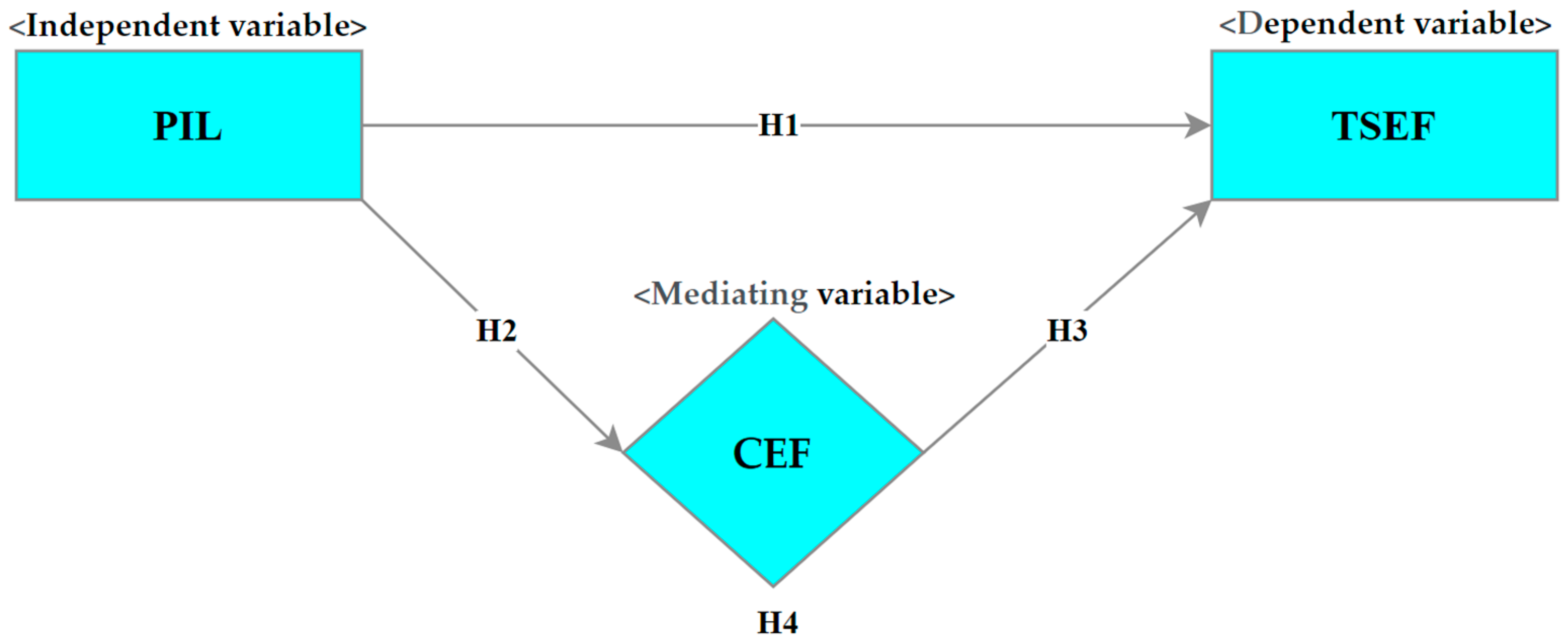
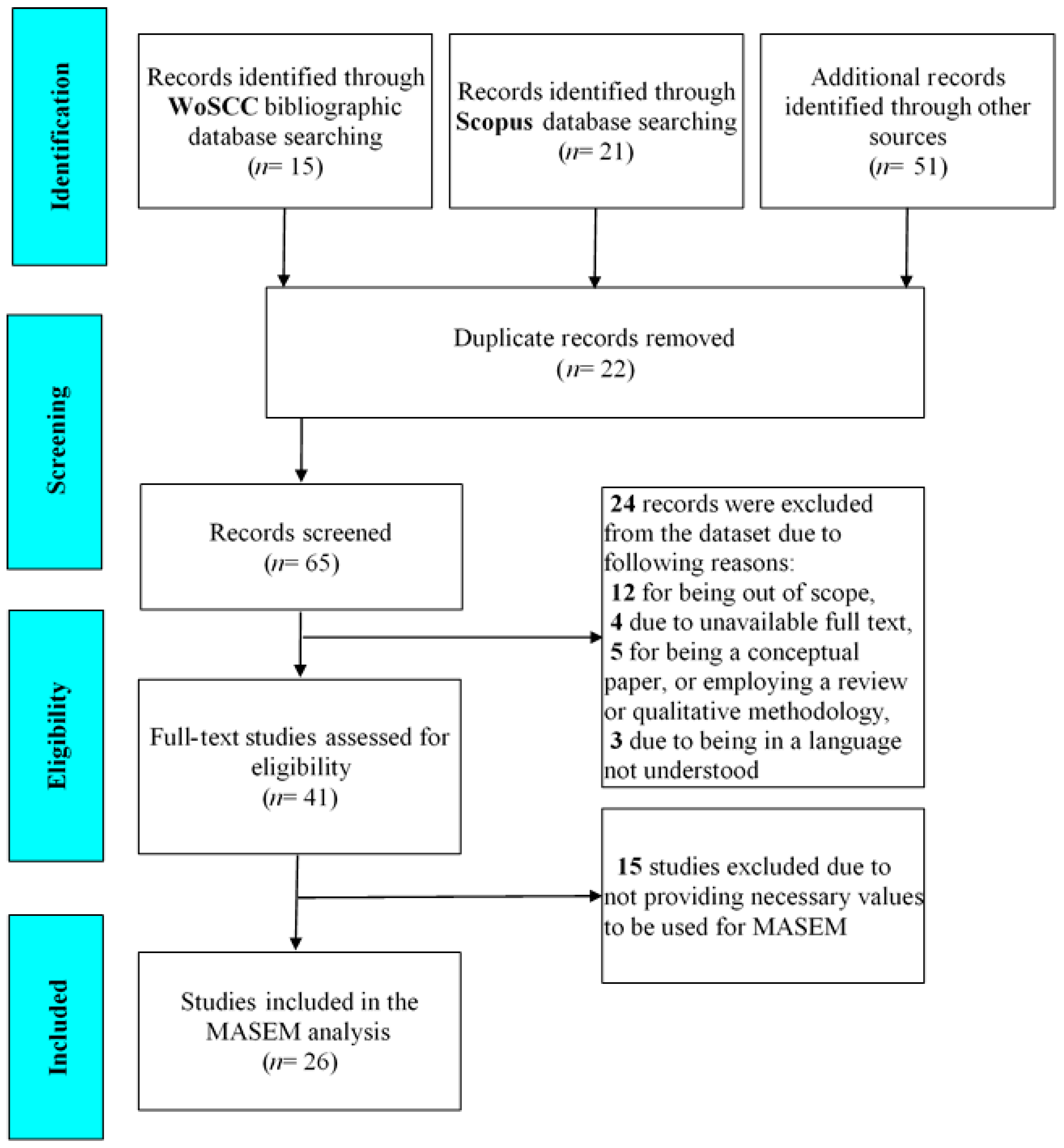
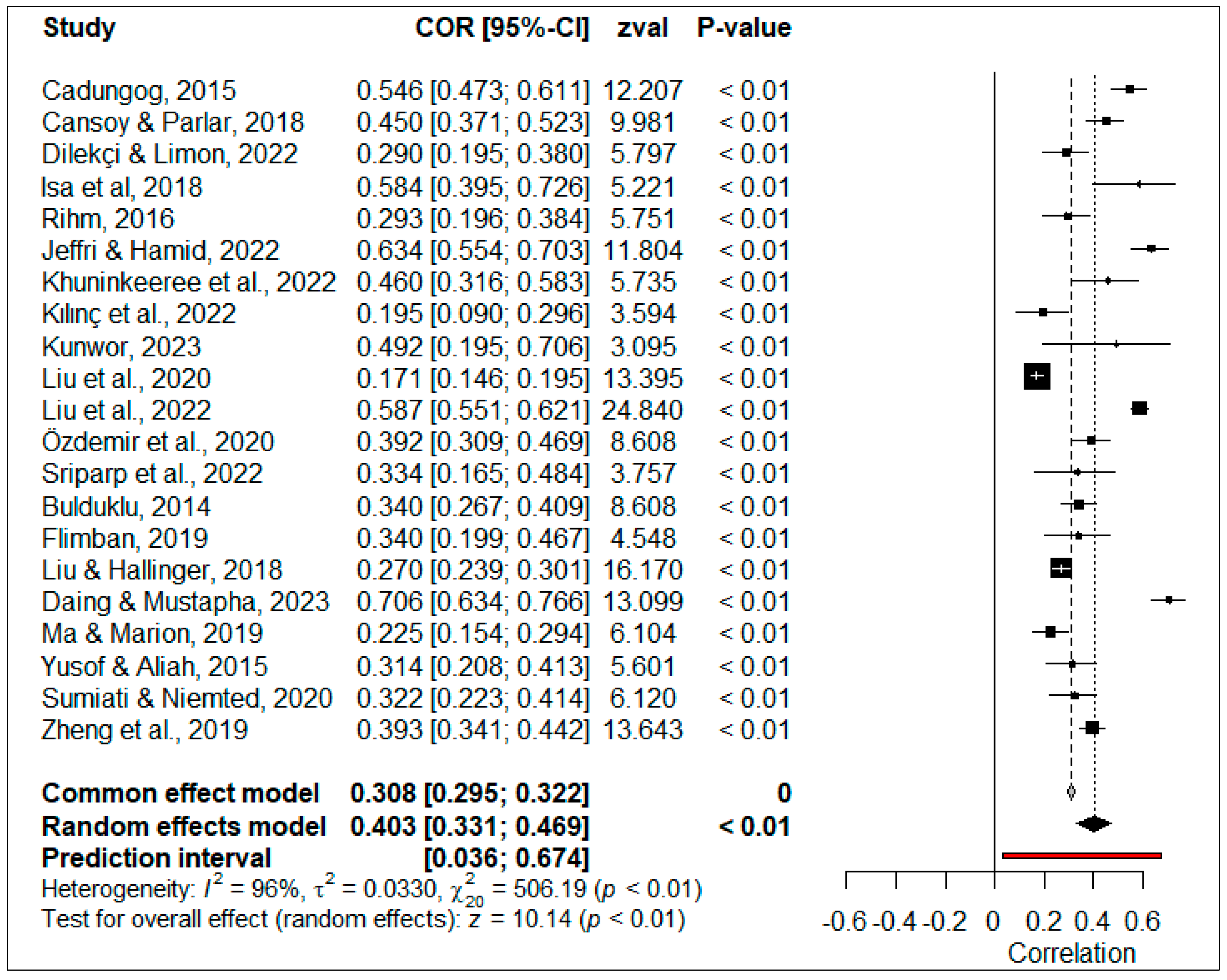
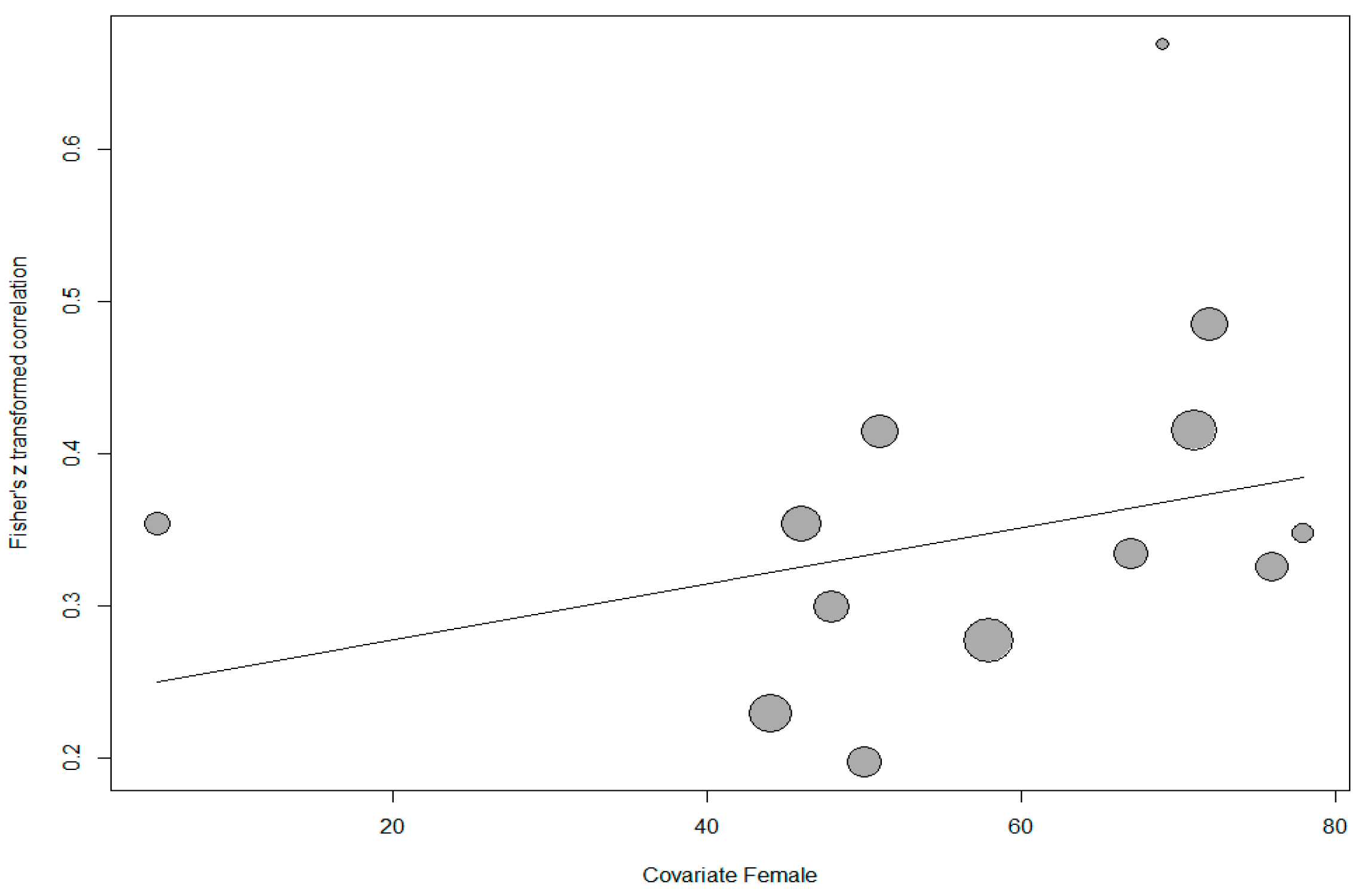
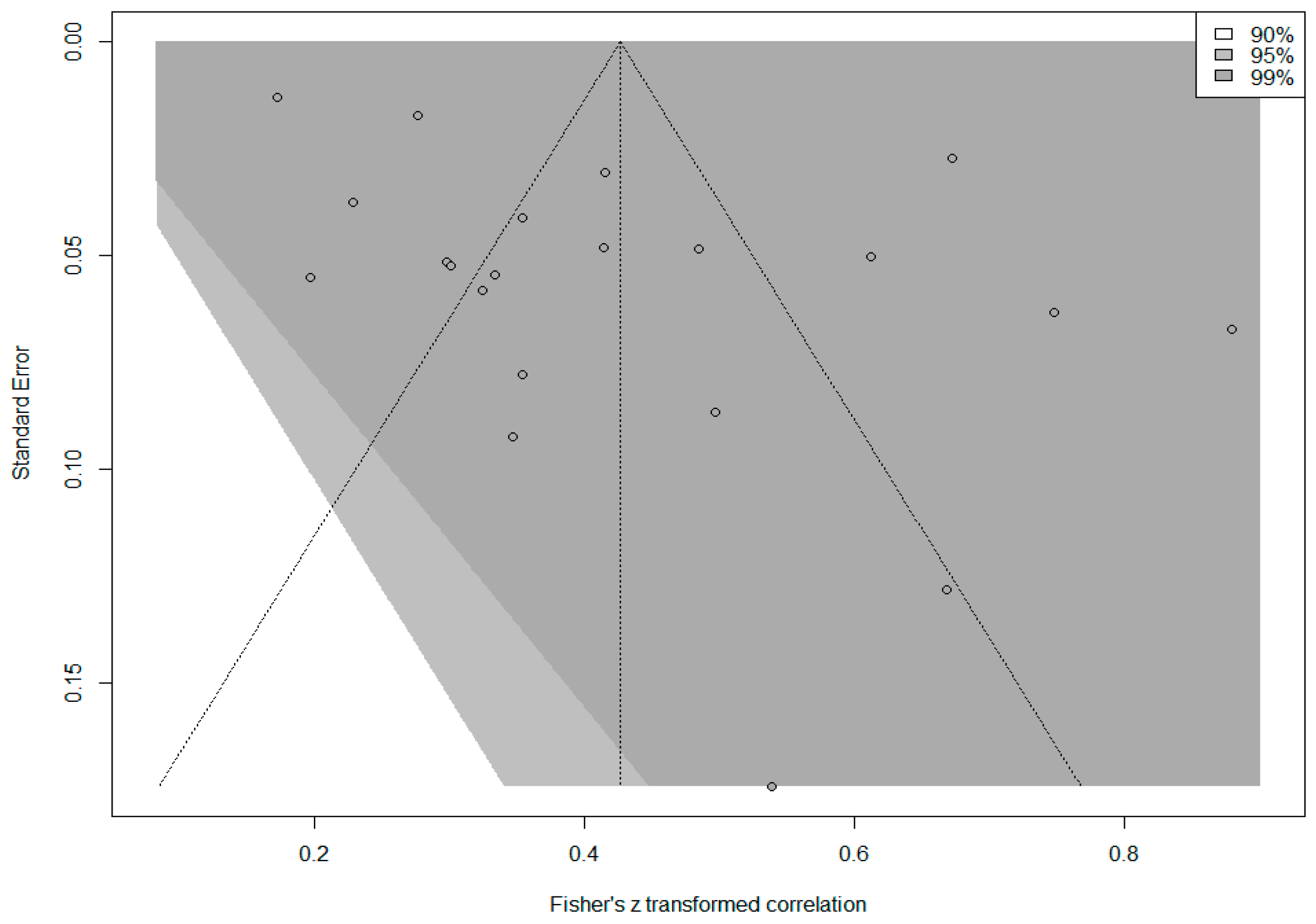
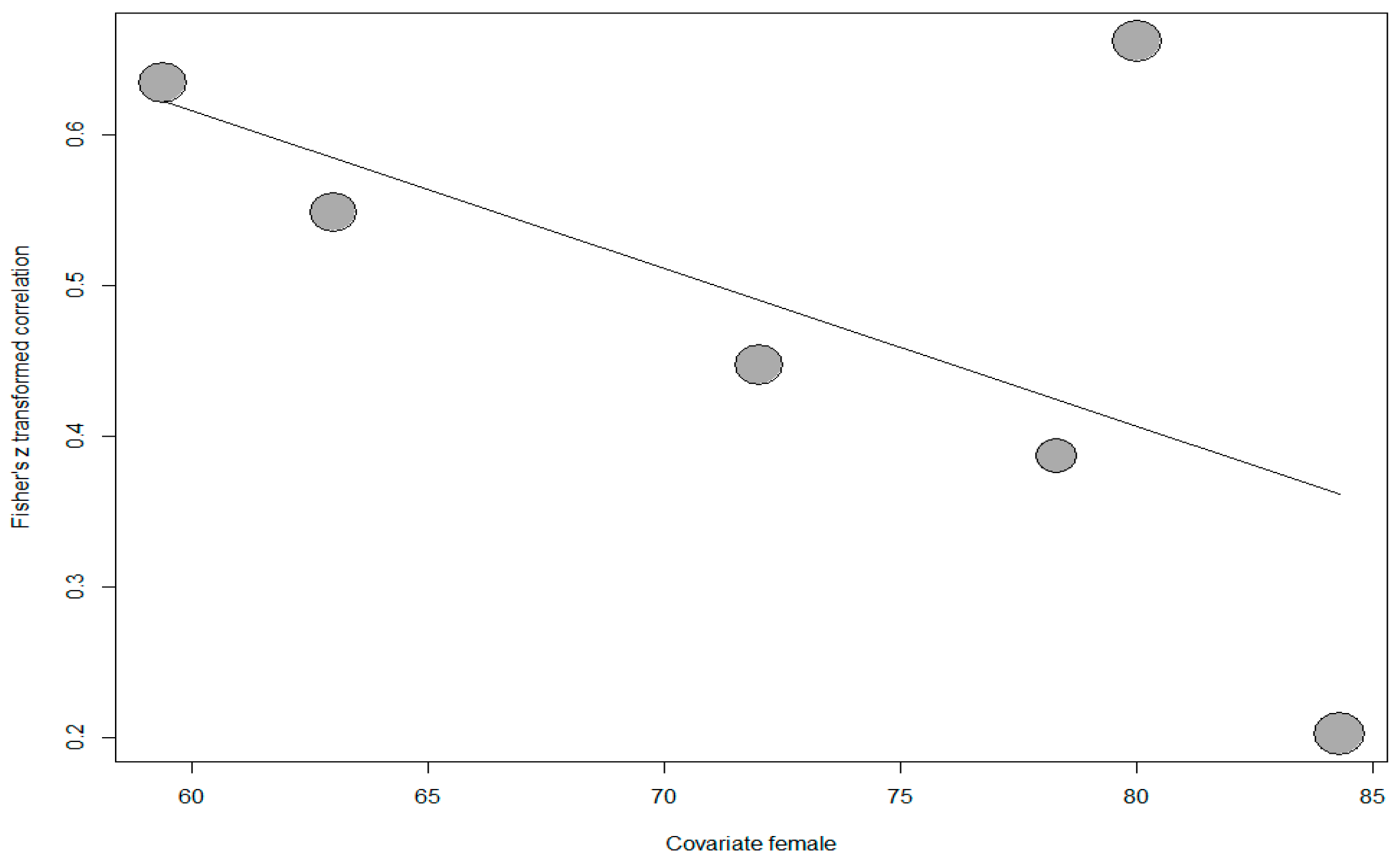
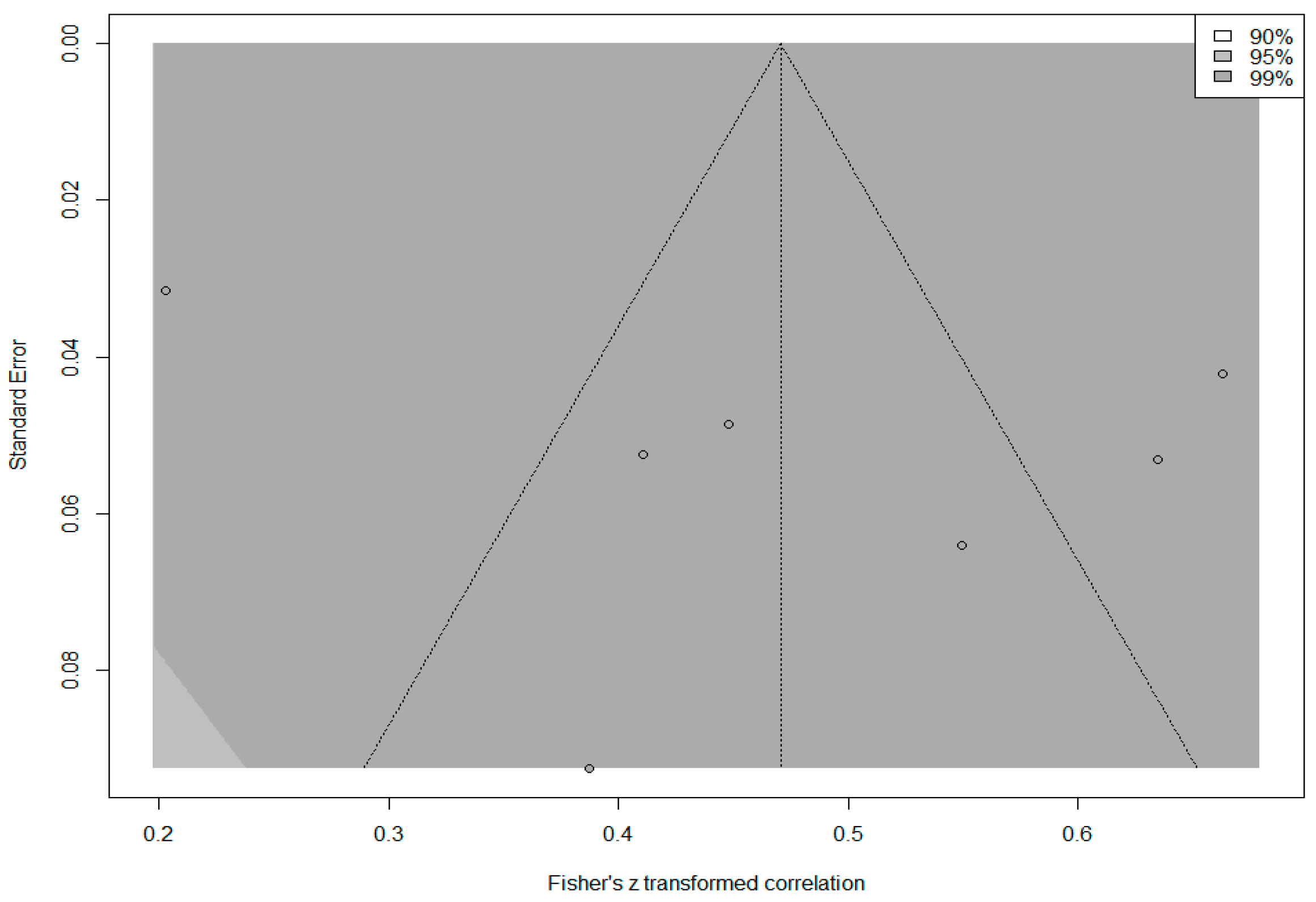

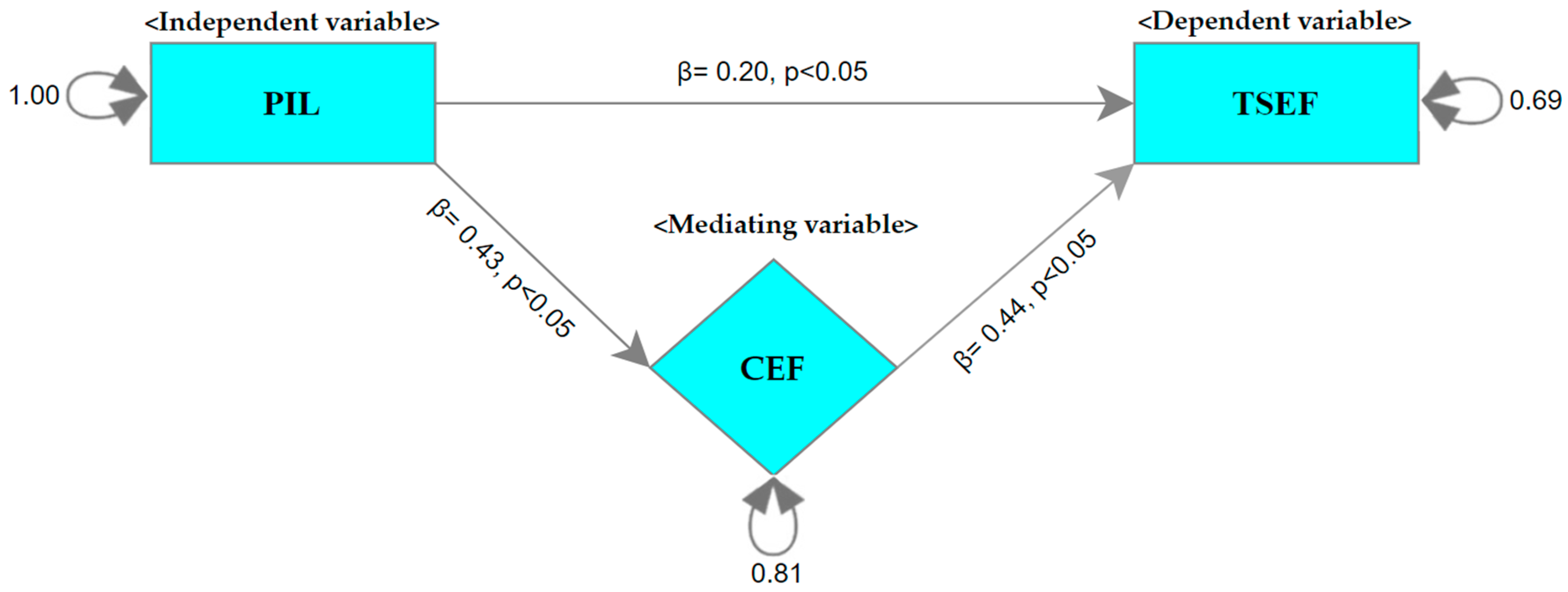
| Gender | |||||||||
|---|---|---|---|---|---|---|---|---|---|
| No. | Author(s), Year | Research Focus | Method | Sample Size | Female | Male | Scales for PIL | Country | Type |
| 1 | Cadungog, 2015 [68] | The mediating role of professional development in the relationship between PIL and TSEF | Correlational | 400 | n.a. | n.a. | Instructional Leadership Questionnaire—ILQ (Lineburg, 2010 [69]) | Philippines | Article |
| 2 | Cansoy and Parlar, 2018 [29] | The relationship between PIL, CEF, and TSEF | Correlational | 427 | 72% | 28% | Effective School Leadership Scale—ESLS (Ata, 2015 [70]) | Türkiye | Article |
| 3 | Dilekçi and Limon, 2022 [71] | The mediating role of TSEF in the relationship between PIL and teachers’ positive instructional emotions (enjoyment, pride, hope) | Correlational | 380 | 47.60% | 52.40% | Principal Instructional Management Rating Scale—PIMRS (Hallinger and Murphy, 1985 [37]) | Türkiye | Article |
| 4 | Isa et al., 2018 [72] | The relationship between PIL and TSEF | Correlational | 64 | 68.75% | 31.25 | PIMRS | Malaysia | Article |
| 5 | Rihm, 2016 [73] | The relationship between PIL and academic heterogeneity with TSEF | Correlational | 366 | n.a. | n.a. | PIMRS | Chile | Dissert. |
| 6 | Jeffri and Hamid, 2022 [74] | The relationship between PIL and TSEF | Correlational | 252 | n.a. | n.a. | PIMRS | Malaysia | Article |
| 7 | Khun-inkeeree et al., 2022 [75] | The relationship between PIL and TSEF | Correlational | 136 | n.a. | n.a. | PIMRS | Malaysia | Article |
| 8 | Cansoy et al., 2020 [21] | The mediating role of CEF in the relationship between PIL and teacher commitment | Correlational | 247 | 63% | 37% | IL Scale (Alig-Mielcarek, 2013 [76]) | Türkiye | Article |
| 9 | Kılınç et al., 2022 [6] | The relationship between PIL and TSEF | Correlational | 334 | 49.40% | 50.60% | PIMRS | Türkiye | Article |
| 10 | Kunwor, 2023 [77] | The effects of PIL on TSEF | Correlational | 36 | n.a. | n.a. | PIMRS | Nepali | Article |
| 11 | Hallinger et al., 2017 [78] | The relationship between principal self-efficacy, PIL, TSEF, and teacher commitment | Correlational | 567 | 80% | 20% | PIMRS | Iran | Article |
| 12 | Liu et al., 2020 [18] | The effect of PIL/DL on TSEF and job satisfaction; the role of supportive school culture and teacher collaboration | Correlational | 6019 | n.a. | n.a. | PIMRS | International | Article |
| 13 | Liu et al., 2022 [10] | The relationship between instructional leadership and TSEF/student achievement | Correlational | 1365 | n.a. | n.a. | PIMRS | China | Article |
| 14 | Özdemir et al., 2020 [79] | The effects of PIL on TSEF | Correlational | 435 | 51% | 49% | PIMRS | Türkiye | Article |
| 15 | Sriparp et al., 2022 [80] | The relationship between PIL and TSEF, and the moderation of teacher role | Correlational | 120 | 78.3% | 21.70% | PIMRS | Thailand | Article |
| 16 | Bulduklu, 2014 [81] | The relationship between PIL, TSEF, and student achievement | Correlational | 594 | 46% | 54% | PIMRS | Türkiye | Dissert. |
| 17 | Flimban, 2019 [82] | The effect of PIL on TSEF in elementary schools | Correlational | 168 | 5.35% | 94,64% | PIMRS | The USA | Dissert. |
| 18 | Vari, 2011 [83] | The relationship between PIL and CEF | Correlational | 236 | 83.75% | 15.41% | PIMRS | The USA | Dissert. |
| 19 | Liu and Hallinger, 2018 [20] | TSEF as a mediator of PIL and teacher professional learning | Correlational | 3414 | 57.5% | 42.50% | PIMRS | China | Article |
| 20 | Daing and Mustapha, 2023 [44] | The relationship between PIL, TSEF, and teacher performance in senior high schools | Correlational | 225 | n.a. | n.a. | PIMRS | Philippines | Article |
| 21 | Ma and Marion, 2019 [84] | The effect of PIL on TSEF, and the mediating role of faculty trust | Correlational | 714 | 44% | 56% | PIMRS | China | Article |
| 22 | Hosseingholizade et al., 2020 [85] | The relationship between PIL, CEF, teacher commitment, and teacher professional learning in primary schools | Correlational | 1007 | 84.30% | 15.70% | PIMRS | Iran | Article |
| 23 | Yusof and Aliah, 2015 [86] | The relationship between perceived PIL, and TSEF | Correlational | 300 | 76.43% | 23.57% | PIMRS | Malaysia | Article |
| 24 | Sumiati and Niemted, 2020 [55] | The relationship between PIL and TSEF in private elementary schools | Correlational | 339 | 67.30% | 32.70% | PIMRS | Indonesia | Article |
| 25 | Zheng et al., 2019 [87] | The relationships between PIL, TSEF, and the professional learning community | Correlational | 1082 | 71.1% | 28.9% | ILS (Louis et al., 2010 [88]) | China | Article |
| 26 | Thien et al., 2021 [89] | The relationship between PIL, teacher commitment, and the mediating role of CEF | Correlational | 357 | 59.40% | 40.60% | PIMRS | China | Article |
| Name of the Moderator | k | Effect Size | 95% CI. | Heterogeneity | |||
|---|---|---|---|---|---|---|---|
| Lower Limit | Upper Limit | Qb | df | p | |||
| Scale type | 21 | 0.403 | 0.331 | 0.469 | 32.640 | 4 | 0.0001 |
| ILQ | 1 | 0.546 | 0.473 | 0.611 | |||
| ESLS | 1 | 0.450 | 0.371 | 0.523 | |||
| PIMRS | 17 | 0.403 | 0.319 | 0.481 | |||
| IL | 1 | 0.195 | 0.090 | 0.296 | |||
| ILS | 1 | 0.393 | 0.341 | 0.442 | |||
| Publication Type | 21 | 0.403 | 0.331 | 0.469 | 3.460 | 1 | 0.063 |
| Article | 18 | 0.416 | 0.335 | 0.492 | |||
| Dissertation | 3 | 0.325 | 0.272 | 0.376 | |||
| Name of the Moderator | k | Effect Size | 95% CI. | Heterogeneity | |||
|---|---|---|---|---|---|---|---|
| Lower Limit | Upper Limit | Qb | df | p | |||
| Scale type | 7 | 0.439 | 0.333 | 0.533 | 32.640 | 1 | 0.763 |
| ESLS | 1 | 0.420 | 0.339 | 0.495 | |||
| PIMRS | 6 | 0.442 | 0.317 | 0.551 | |||
| Publication Type | 7 | 0.439 | 0.333 | 0.533 | 3.460 | 1 | 0.438 |
| Article | 6 | 0.447 | 0.325 | 0.554 | |||
| Dissertation | 1 | 0.389 | 0.298 | 0.473 | |||
| Name of the Moderator | k | Effect Size | 95% CI. | Heterogeneity | |||
|---|---|---|---|---|---|---|---|
| Lower Limit | Upper Limit | Qb | df | p | |||
| Scale type | 4 | 0.594 | 0.352 | 0.700 | 0.390 | 2 | 0.821 |
| ESLS | 1 | 0.490 | 0.414 | 0.559 | |||
| OTHER | 1 | 0.482 | 0.338 | 0.574 | |||
| PIMRS | 2 | 0.614 | 0.136 | 0.860 | |||
| Publication Type | 4 | 0.594 | 0.352 | 0.700 | 3.460 | 1 | 0.438 |
| Article | 2 | 0.647 | 0.291 | 0.845 | |||
| Dissertation | 2 | 0.436 | 0.354 | 0.511 | |||
Disclaimer/Publisher’s Note: The statements, opinions and data contained in all publications are solely those of the individual author(s) and contributor(s) and not of MDPI and/or the editor(s). MDPI and/or the editor(s) disclaim responsibility for any injury to people or property resulting from any ideas, methods, instructions or products referred to in the content. |
© 2024 by the authors. Licensee MDPI, Basel, Switzerland. This article is an open access article distributed under the terms and conditions of the Creative Commons Attribution (CC BY) license (https://creativecommons.org/licenses/by/4.0/).
Share and Cite
Karakose, T.; Kardas, A.; Kanadlı, S.; Tülübaş, T.; Yildirim, B. How Collective Efficacy Mediates the Association between Principal Instructional Leadership and Teacher Self-Efficacy: Findings from a Meta-Analytic Structural Equation Modeling (MASEM) Study. Behav. Sci. 2024, 14, 85. https://doi.org/10.3390/bs14020085
Karakose T, Kardas A, Kanadlı S, Tülübaş T, Yildirim B. How Collective Efficacy Mediates the Association between Principal Instructional Leadership and Teacher Self-Efficacy: Findings from a Meta-Analytic Structural Equation Modeling (MASEM) Study. Behavioral Sciences. 2024; 14(2):85. https://doi.org/10.3390/bs14020085
Chicago/Turabian StyleKarakose, Turgut, Abdurrahman Kardas, Sedat Kanadlı, Tijen Tülübaş, and Bilal Yildirim. 2024. "How Collective Efficacy Mediates the Association between Principal Instructional Leadership and Teacher Self-Efficacy: Findings from a Meta-Analytic Structural Equation Modeling (MASEM) Study" Behavioral Sciences 14, no. 2: 85. https://doi.org/10.3390/bs14020085
APA StyleKarakose, T., Kardas, A., Kanadlı, S., Tülübaş, T., & Yildirim, B. (2024). How Collective Efficacy Mediates the Association between Principal Instructional Leadership and Teacher Self-Efficacy: Findings from a Meta-Analytic Structural Equation Modeling (MASEM) Study. Behavioral Sciences, 14(2), 85. https://doi.org/10.3390/bs14020085








